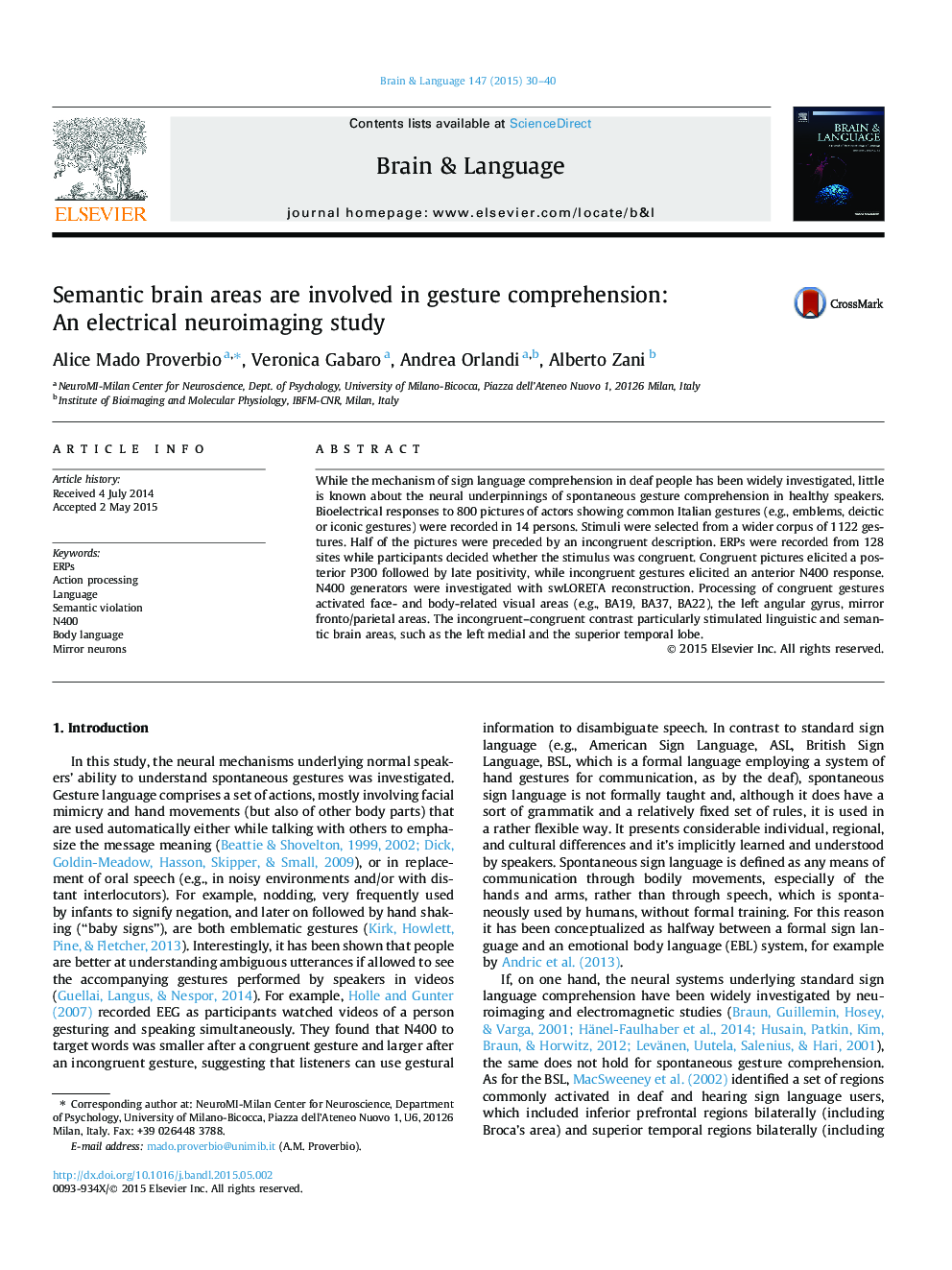| Article ID | Journal | Published Year | Pages | File Type |
|---|---|---|---|---|
| 7284245 | Brain and Language | 2015 | 11 Pages |
Abstract
While the mechanism of sign language comprehension in deaf people has been widely investigated, little is known about the neural underpinnings of spontaneous gesture comprehension in healthy speakers. Bioelectrical responses to 800 pictures of actors showing common Italian gestures (e.g., emblems, deictic or iconic gestures) were recorded in 14 persons. Stimuli were selected from a wider corpus of 1122 gestures. Half of the pictures were preceded by an incongruent description. ERPs were recorded from 128 sites while participants decided whether the stimulus was congruent. Congruent pictures elicited a posterior P300 followed by late positivity, while incongruent gestures elicited an anterior N400 response. N400 generators were investigated with swLORETA reconstruction. Processing of congruent gestures activated face- and body-related visual areas (e.g., BA19, BA37, BA22), the left angular gyrus, mirror fronto/parietal areas. The incongruent-congruent contrast particularly stimulated linguistic and semantic brain areas, such as the left medial and the superior temporal lobe.
Related Topics
Life Sciences
Neuroscience
Biological Psychiatry
Authors
Alice Mado Proverbio, Veronica Gabaro, Andrea Orlandi, Alberto Zani,
